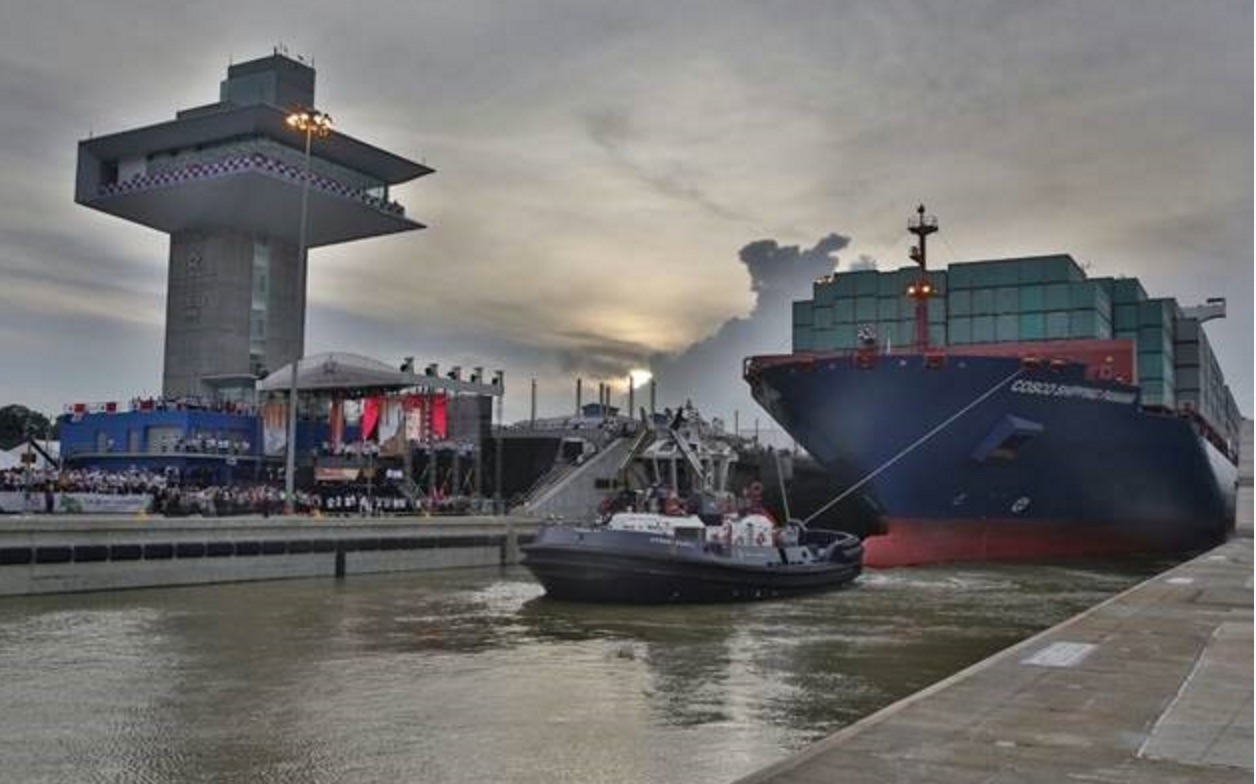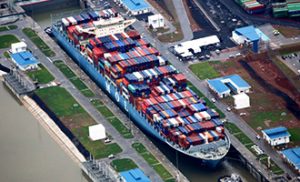
Now that dignitaries have gone home and the confetti from the opening ceremony has been cleared, attention turns to how the expanded Panama Canal will impact US container logistics.
The opening ceremony for the opening of the new set of Panama Canal locks was largely a symbolic affair. A global audience watched and applauded as the COSCO Shipping PANAMA became the first “Neopanamax” container vessel to transit the new locks. In reality they were watching a lightly loaded vessel carrying mostly empty boxes back from Piraeus to Korea.
This week MOL claimed its vessel the MOL BENEFACTOR was actually the first “Neopanamax” vessel to “perform a commercial transit through the Canal’s new expanded locks” on 1 July.

“MOL BENEFACTOR, newly built and delivered to MOL in March of 2016 is also the first Neo-Panamax vessel deployed on the G6 Alliance’s new NYX service. The NYX provides a direct link between Qingdao, Ningbo, Shanghai, Busan with New York, Norfolk and Savannah on the United States East Coast and also provides connections to/from Latin America via Manzanillo, Panama,” MOL stated.
New York, Norfolk and Savannah are the largest container ports on the East Coast and expect to benefit significantly from the Canal expansion, but one of the major winners could turn out to be Mobile Alabama, which is well placed to emerge as a hub for intermodal services to the US midwest. APM Terminals recognised this some time ago, and over the last 12 months it has invested at Mobile while at the same time withdrawing from terminal operations in Portsmouth, Virginia, Houston, Jacksonville and Charleston.
Last year Canadian National Rail (CN), APM Terminals and the Alabama State Port Authority (ASPA) signed an MoU to boost intermodal traffic through Mobile. The ASPA is in the process of developing a new Intermodal Container Transfer Facility (ICTF) at Garrows Bend, incorporating 2 operating tracks, a loop track, and car repair siding each with a minimum length of 3,000ft, which will cost US $32M to build.
As well as investing in infrastructure the partners have a “level of service” agreement where CN will commit to positioning rail cars in Mobile to move containers to locations in the US midwest. This is crucial to providing regular service levels, rather than theoretical connection times, that shippers are looking for.
This week CN has announced a new service with a two-day transit from Mobile to Chicago, and other railroads are expected to follow with new services out of Mobile. The ICTF there also serves BN, UP, CSX and KCS, and CSX in particular is looking to increase container services to make up for the decline in its traditional traffic to Mobile, coal.
Mobile clearly has potential as distribution centre, and while nothing has yet been confirmed Walmart is in the process of gathering state and county funding for a new 3 million square ft distribution centre about 15 miles from the port. This would be a significant boost to the port – and where Walmart goes others normally follow.
“Disclaimer: “Breakbulk News & Media BV (Breakbulk.News) assumes no responsibility or liability for any errors or omissions in the content of articles published. The information and or article contained in these articles is provided on an “as is” basis with no guarantees of completeness, accuracy, usefulness or timeliness…”

